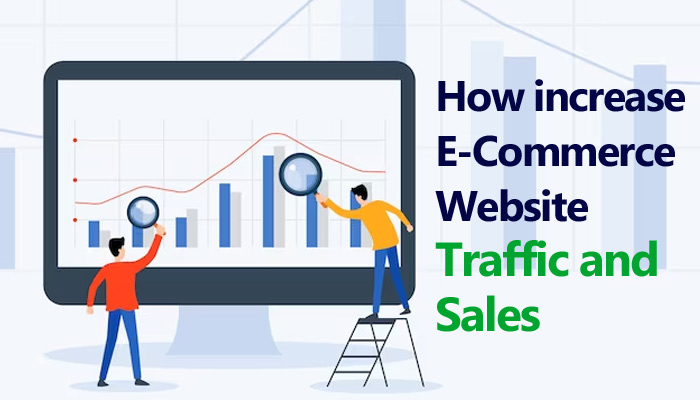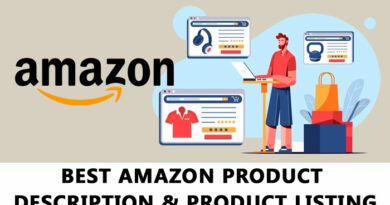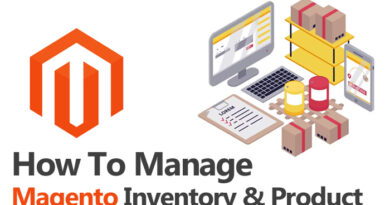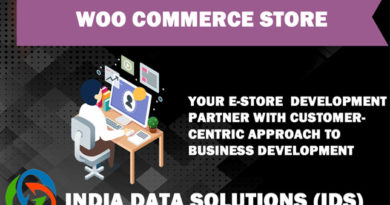How to increase your e-commerce website traffic and Sales
In today’s digital age, e-commerce has become an increasingly popular way for businesses to sell their products and services online. However, with more and more e-commerce stores popping up every day, it can be difficult to stand out in a crowded market. One of the biggest challenges facing e-commerce businesses is how to increase website traffic and generate more leads. In this article, we’ll explore some of the best strategies and tactics for boosting e-commerce traffic and getting more leads.
Organic Methods
1. Search Engine Optimization (SEO)
Search engine optimization (SEO) is the process of optimizing your website to rank higher in search engine results pages (SERPs). By improving your website’s ranking, you can attract more organic traffic from search engines like Google and Bing.
Here are some tips for optimizing your e-commerce website for SEO:
Keyword Research
The first step in any SEO strategy is to conduct keyword research to identify relevant and high-traffic keywords for your niche. By targeting the right keywords, you can attract more traffic to your website and improve your conversion rate.
Long-Tail Keywords
Long-tail keywords are specific phrases that people use when searching for something online. By targeting long-tail keywords, you can improve your conversion rate by attracting more targeted traffic to your website. Long-tail keywords are also less competitive than broad keywords, making it easier to rank for them in search engine results pages.
High-Quality and Informative Content
Creating high-quality and informative content that’s optimized for your target keywords is crucial for effective SEO. This content can include blog posts, product descriptions, and category pages. By creating content that answers your target audience’s questions and provides value, you can attract more traffic to your website and establish your brand as a thought leader in your industry.
Mobile-Friendly Website
With more and more people using mobile devices to browse the internet, having a mobile-friendly website is essential for effective SEO. Google has even started using mobile-first indexing, which means that it looks at the mobile version of a website first when determining search engine rankings. Make sure your website is optimized for mobile devices and has a fast page loading speed.
Google My Business and Online Directories for Local SEO
If you have a physical store, optimizing for local SEO is crucial for attracting customers in your area. Google My Business is a free tool that allows you to manage your business’s online presence across Google, including search and maps. Online directories, such as Yelp and Yellow Pages, can also help improve your local SEO by providing backlinks to your website.
2. Content Marketing
Content marketing involves creating and sharing valuable and relevant content to attract and retain a clearly defined audience. This can include blog posts, videos, infographics, and other forms of content.
Here are some tips for effective content marketing:
Content Calendar
Creating a content calendar can help you plan and organize your content strategy. This will ensure that you are consistently producing high-quality and relevant content that resonates with your target audience.
Address Your Target Audience’s Pain Points and Interests
Your content should address your target audience’s pain points and interests. By providing valuable information that solves their problems or answers their questions, you can establish yourself as an authority in your industry and attract more traffic to your website.
Use a Mix of Formats
Using a mix of formats, such as blog posts, videos, and infographics, can keep your content fresh and engaging. This will also appeal to different learning styles and preferences.
Promote Your Content
Promoting your content on social media and other channels can help you reach a wider audience and attract more traffic to your website. Make sure to share your content on all relevant platforms and engage with your audience to build a community around your brand.
3. Social Media Marketing
Social media marketing involves using social media platforms like Facebook, Instagram, and Twitter to promote your e-commerce store and drive traffic to your website. Here are some tips for effective social media marketing:
Identify Relevant Platforms
Identifying the social media platforms that are most relevant to your target audience is crucial for effective social media marketing. Different platforms appeal to different demographics and interests, so make sure to research which platforms your target audience is using.
Content Calendar
Creating a social media content calendar can help you plan and organize your content strategy. This will ensure that you are consistently producing high-quality and relevant content that resonates with your target audience.
Use a Mix of Formats
Using a mix of formats, such as images, videos, and live streaming, can keep your content fresh and engaging. This will also appeal to different learning styles and preferences.
Engage with Your Audience
Engaging with your audience by responding to comments and messages in a timely manner can help build a community around your brand. This will also increase the likelihood that your audience will share your content and recommend your brand to others.
Paid Social Media Advertising
Using paid social media advertising can help you reach a wider audience and drive targeted traffic to your website.
Paid Methods
1. Pay-Per-Click (PPC) Advertising
Pay-per-click (PPC) advertising involves creating ads that target specific keywords and demographics. By using PPC, you can attract high-quality traffic to your website and increase your conversion rate. Here are some tips for effective PPC advertising:
Keyword Research
Conducting keyword research to identify relevant and high-traffic keywords for your niche is crucial for effective PPC advertising. This will ensure that your ads are targeting the right audience.
Targeted Ad Campaigns
Creating targeted ad campaigns that speak to your target audience’s interests and pain points can increase the likelihood that they will click on your ad and visit your website.
Retargeting Ads
Using retargeting ads can help you reach visitors who have already shown interest in your website. This will increase the likelihood that they will return to your website and make a purchase.
Monitor and Analyze Your Ad Campaigns
Monitoring and analyzing your ad campaigns regularly can help you optimize for maximum effectiveness. This will ensure that you are getting the most out of your PPC advertising budget.
2. Social Media Advertising
Social media advertising involves creating ads that target specific demographics and interests on social media platforms like Facebook, Instagram, and Twitter.
By using social media advertising, you can reach a wider audience and drive more traffic to your website. Here are some tips for effective social media advertising:
Identify Relevant Platforms
Identifying the social media platforms that are most relevant to your target audience is crucial for effective social media advertising. Different platforms appeal to different demographics and interests, so make sure to research which platforms your target audience is using.
Targeted Ad Campaigns
Creating targeted ad campaigns that speak to your audience’s interests and pain points can increase the likelihood that they will click on your ad and visit your website.
Retargeting Ads
Using retargeting ads can help you reach visitors who have already shown interest in your website. This will increase the likelihood that they will return to your website and make a purchase. Monitor and Analyze Your Ad Campaigns
Monitoring and analyzing your ad campaigns regularly can help you optimize for maximum effectiveness. This will ensure that you are getting the most out of your social media advertising budget.
Other Strategies
1. User Experience (UX) Design
User experience (UX) design involves creating a website that’s easy to navigate and understand. By improving your website’s UX design, you can improve your conversion rate and keep visitors coming back for more.
Here are some tips for effective UX design:
Keep Your Website Design Simple and Intuitive
Keeping your website design simple and intuitive, with clear calls to action, can improve your website’s usability and increase the likelihood that visitors will make a purchase.
Use High-Quality Images and Videos
Using high-quality images and videos to showcase your products and services can improve your website’s visual appeal and increase the likelihood that visitors will make a purchase.
Mobile-Friendly Website
As mentioned earlier, having a mobile-friendly website is essential for effective SEO. It’s also crucial for effective UX design. Make sure your website is optimized for mobile devices and has a fast page loading speed.
A/B Testing
Using A/B testing to try out different design elements can help you optimize your website for maximum effectiveness. This will ensure that your website is appealing to your target audience and is driving the most traffic possible.
2. Personalization
Personalization involves tailoring your website and marketing efforts to each individual customer’s needs and preferences. By providing a personalized experience, you can build a loyal following and increase your conversion rate. Here are some tips for effective personalization:
Use Data and Analytics
Using data and analytics to understand your customers’ behavior and preferences can help you personalize your website and marketing efforts. This will ensure that you are providing a personalized experience that resonates with your target audience.
Personalization Tools and Software
Using personalization tools and software can help you create targeted content and offers for each individual customer. This can include personalized product recommendations, targeted emails, and personalized landing pages.
Email Marketing and Social Media
Using email marketing and social media to communicate with your customers on a personal level can help you build a community around your brand. This will increase the likelihood that your customers will make repeat purchases and recommend your brand to others.
Monitor and Analyze Your Personalization Efforts
Monitoring and analyzing your personalization efforts regularly can help you optimize for maximum effectiveness. This will ensure that you are providing the most personalized experience possible and driving the most traffic and leads to your website.
3. E-commerce Development
Effective e-commerce development is crucial for any successful e-commerce strategy. By working with an experienced e-commerce development team, you can ensure that your website is optimized for maximum performance and functionality. Here are some tips for effective e-commerce development:
Work with an Experienced E-commerce Development Team
Working with an experienced e-commerce development team can ensure that your website is optimized for maximum performance and functionality . This will ensure that your website is appealing to your target audience and is driving the most traffic possible.
Use SEO, PPC Advertising, Social Media Marketing, and Content Marketing
Using a combination of SEO, PPC advertising, social media marketing, and content marketing can help you drive traffic to your website and generate more leads. Make sure to use these strategies in conjunction with each other for maximum effectiveness.
Use Data and Analytics Tools
Using data and analytics to understand your customers’ behavior and preferences can help you optimize your website and marketing efforts for maximum effectiveness. This will ensure that you are providing the best possible experience for your customers and driving the most traffic and leads to your website.
Monitor and Analyze Your E-commerce Development Efforts
Monitoring and analyzing your e-commerce development efforts regularly can help you ensure ongoing growth and success for your e-commerce business. This will ensure that you are constantly optimizing your website and marketing efforts for maximum effectiveness.
Conclusion
In conclusion, there are many strategies and tactics that e-commerce businesses can use to increase website traffic and generate more leads. Organic methods like SEO, content marketing, and social media can help you attract more traffic to your website, while paid methods like PPC advertising and social media advertising can help you reach a wider audience and drive targeted traffic to your website. Other strategies like UX design, personalization, and e-commerce development are also essential for optimizing your website and marketing efforts for maximum effectiveness. Remember that increasing traffic and generating leads is an ongoing process that requires consistent effort and optimization, but with the right approach, you can achieve long-term success for your e-commerce business.




